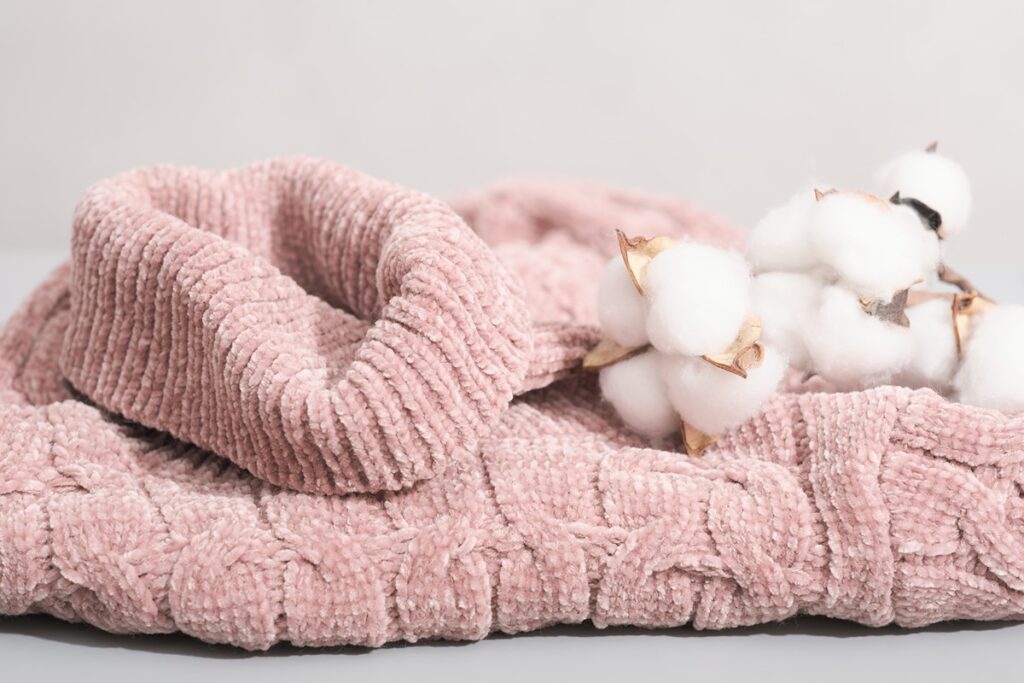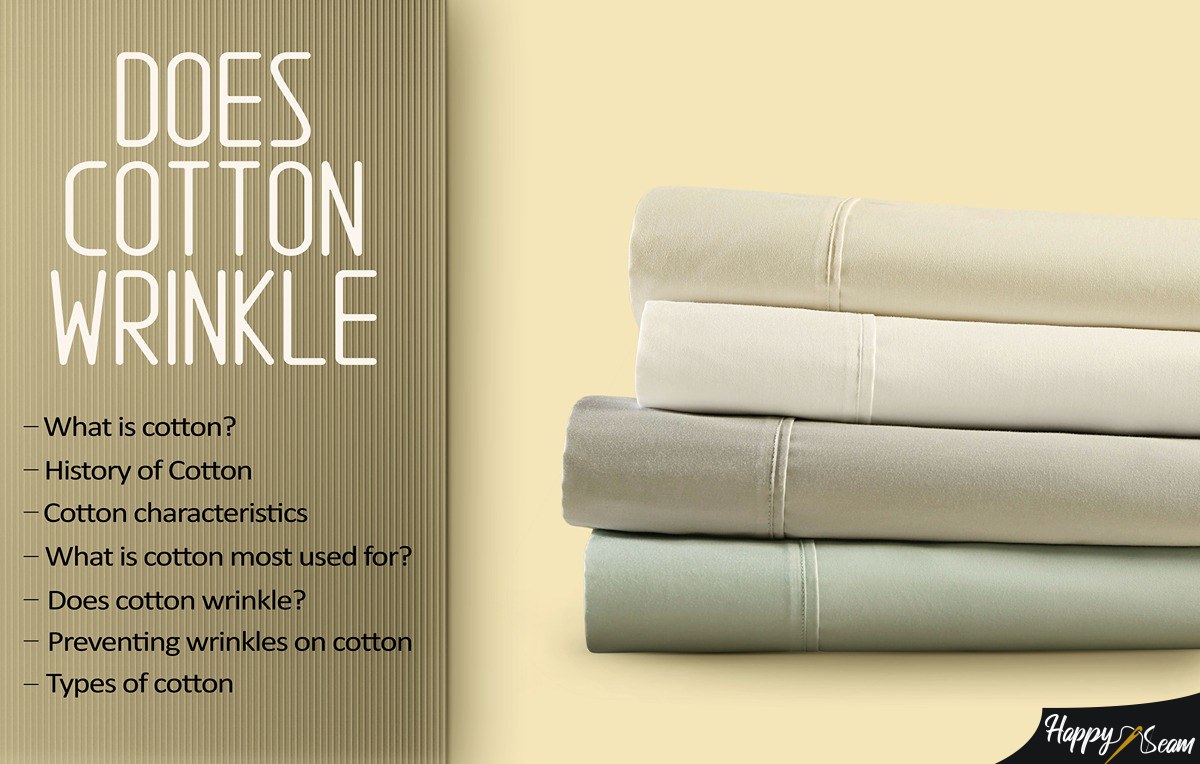This is one of the most known materials clothing industries have ever worked with. A big percentage of your clothes are probably made out of it. Today we are talking about cotton and its characteristics as the most used and organic fabric to exist. Its fluffiness, eco-friendliness, and durability are what made this material reach its potential. Stay with us to learn more about cotton and to make sure you make the right decision if you are thinking about purchasing it.
Cotton fabric is prone to wrinkles. Washing it using your preferences to start the washing machine will only make things worse. To prevent this, always read the label instructions so you can check out what temperature and washing cycle works best.
Key Takeaways
- Cotton is a very soft and organic material with long-lasting durability and breathability.
- It is known to originate from India, but there isn’t much proof yet. However, today the USA stands as the biggest producer of cotton, and India and China are straight after.
- This fabric has many amazing characteristics, such as durability, quality, absorbance, and comfort.
- Cotton does wrinkle because of the chemical reaction hydrogen starts when in touch with water molecules. Cotton is known to be wrinkly.
- The methods to prevent wrinkles from your cotton are very simple! Just follow the instructions mentioned in the article.
- To get the wrinkles out you got to follow the three standard methods: ironing, drying in a machine, or hanger.
- There are four types of cotton, and all of them have pretty familiar characteristics but they aren’t produced the same.
What is Cotton?

Cotton is very soft looking and naturally made fiber. It is very special due to its environmentally friendly characteristics. This material dates back to the fifth millennium before Christ and it is made from cotton plants that belong to the Gossypium genus category. Its structure is mostly cellulose because the plant itself contains cellulose to survive. The fluffy fibers come from the boll in which the cotton plants grow. This material requires sunny weather with a little bit of rain to get to its best version, but it strongly avoids freezing temperatures.
History of Cotton
Even though it is most likely that cotton first originated in India, the word cotton itself comes from the Arabian word “quton”. In the thirteenth century, the Indians made a tool called the cotton gin. They used this tool to separate seeds from the fluff. This invention is what first made cotton popular because the process of making it with this tool was faster and a lot easier. After the industrial revolution, new technological processes were being discovered as Britain took the lead in producing cotton. However, after the two terrible wars, the USA became the leading manufacturer of cotton, just a little bit above China and India.
Cotton characteristics
Cotton is so popular, but with reasonable reasons. First of all, this material is so soft, which gives you a very comfortable feeling while wearing it. It doesn’t feel hard or textured on the skin. Also, it is very durable meaning that you can wear it for long periods and it will still look brand new. It absorbs liquids well too, which means it has a good dye absorbance. Plus it is very breathable and it doesn’t make you feel sweaty after wearing it for many hours straight unlike other materials, it feels fresh on the skin. Cotton doesn’t contain electricity static, unlike other materials which makes it natural and safe.
What is cotton most used for?
This material has many different purposes. It is used to make woven clothes out of it, just like denim, flannel, damask, and many others. Also, as a result of the big manufacturing of cotton, it is the most popular in the clothing industry, jeans, sweaters, blousons, underwear, dresses, and many other clothes are made out of it. It is also used for the production of bed sheets and pillow sheets because it is very absorbent and feels comfy to sleep in it. Cotton is also used for the making of home decorations such as curtains, pillowcases, and many more. The last famous thing made out of cotton is cottonseed oil. This oil is used in salads, soaps, shampoos, makeup products, and more.
Does cotton wrinkle?

Yes, cotton does wrinkle indeed. Wrinkling in cotton happens simply because of the hydrogen particles that react while being in touch with water. The best way to get out wrinkles is to prevent them in time with dry cleaning or else. So, since we know cotton wrinkles easily, especially when in touch with water, the best preventive methods you can use are caretaking for the fabric and reading the manufacturer’s label instructions before washing it and just as you purchase it.
Preventing wrinkles on cotton
As we already mentioned, good caretaking of the cotton material surely prevents it from wrinkling. But what if your cotton wrinkles after that? Don’t you worry, we got you on this as well. The first step is ironing the product which is a very obvious start. Every cotton product needs different care measures, that’s why it all depends on the labels etiquette.
Ironing should be your last resort. You can also work with a clothing hanger. Simply place the cotton product on a hanger to dry right after it is washed and leave it to dry straight on its own. The last option is drying cotton in a drying machine, settling on the settings recommended on the label.
Some Known Types of Cotton
There are four main types of cotton.
- Egyptian Cotton – this type of cotton belongs to the Gossypium barbadense type and it is harvested near the river Nile.
- Pima Cotton – this type is known to be the best quality cotton type and it also comes from the Gossypium barbadense type. This type is more resistant to wrinkling and it’s known to be the softest and most absorbent one. It is harvested in South America.
- Upland Cotton– this type contains very short fibers and it is mostly harvested in Mexico, the Caribbean, Florida, and South America. This is the best seller of all cotton types reaching nearly 90% of the total production.
- Organic Cotton – this type is 100% natural without any kinds of other materials or chemicals included. It is strictly made out of plants.
Final words
Cotton is so far the best and most used fabric in most textile industries. This material is practical for many things except wrinkling. But that should not be an issue since you only have to follow the caretaking instructions or iron it sometimes. This eco-friendly, soft and natural material reached its popularity for a reason. Even though organic cotton and other types can be a little bit expensive depending on the market, you are totally purchasing a worthy product.
Further Reading
You can read a few more blogs like whether acrylic is stretchable. Another blog addresses whether cotton stretches.
A review of the Juki DU 1181N is also included. Furthermore, you can read a comparison of lycra and elastane.
I address the question of whether viscose is stretchable in another article as well.
I graduated from London College of Fashion, and I’ve been working for a Fashion Design company for 10 years. My other hobbies are going to the gym and reading.



